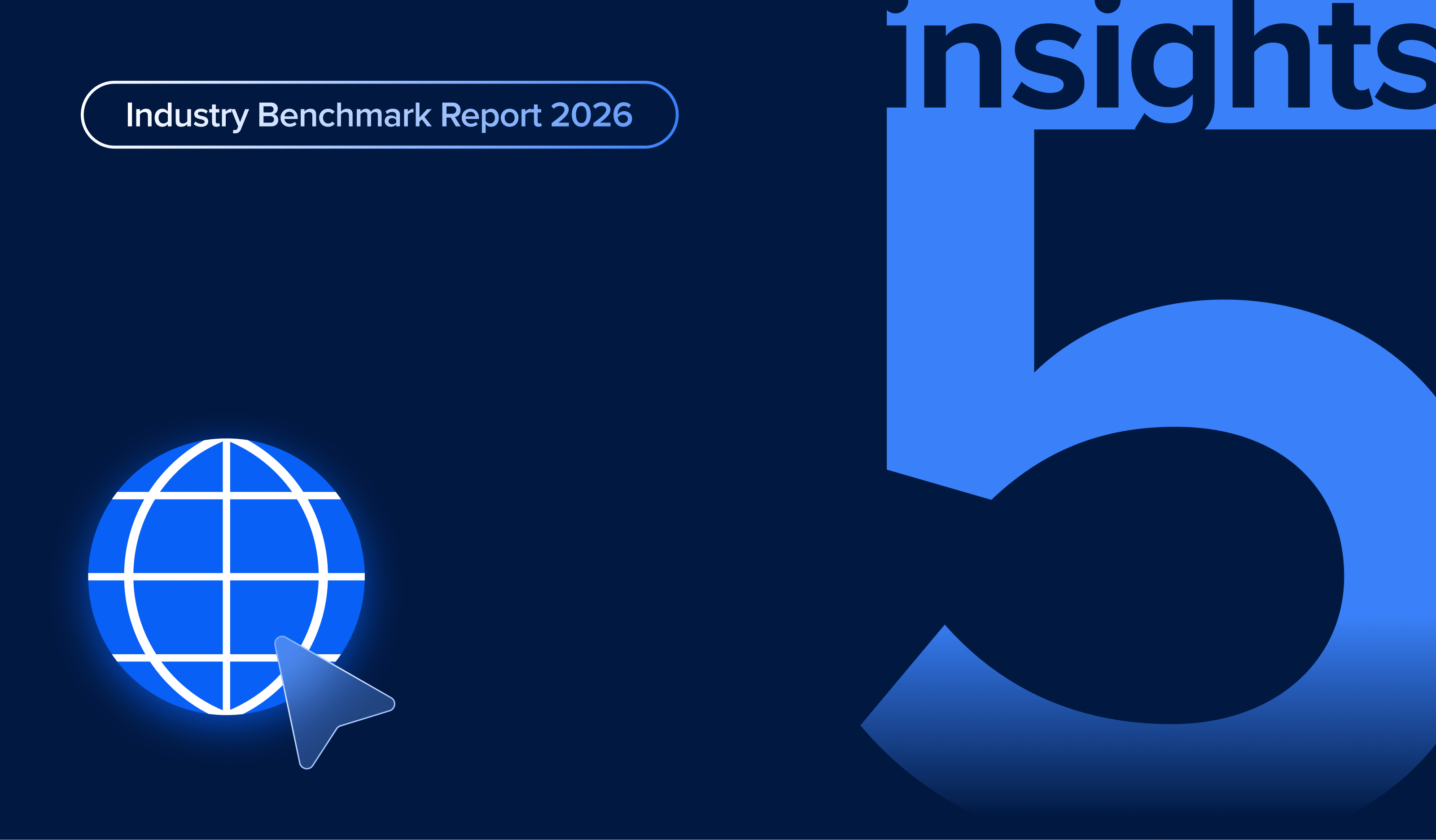Venue Management - Employee Onboarding Checklist
.png?width=820&name=Venue%20Management%20-%20Employee%20Onboarding%20Checklist_Social(2_1).png)
Employee onboarding is not just about welcoming a new team member; it's about setting them up for success from day one. Our comprehensive guide, peppered with professional insights and tips, will walk you through the critical stages of employee onboarding so that new employees at your venue can hit the ground running.
Key takeaways
- Onboarding is key for new hire success and engagement.
- Pre-start preparations set the foundation for a smooth transition.
- First-day activities focus on culture introduction and role clarity.
- Continuous integration involves training, goal-setting, and career growth.
New onboarding checklist
Phase 1: Welcome aboard — Pre-start preparations
To borrow a common saying, a thousand-mile journey begins with a single step. With employee onboarding, this step is taken even before the new hire sets foot in your venue. Here are the ways to make your new team member feel both welcomed and fully prepared from the start.
Provide a comprehensive welcome packet that includes:
- An overview of the employee handbook, emphasizing venue-specific policies and expectations.
- Dress code guidelines detailing uniform requirements and appearance standards.
- Detailed map including directions to the venue and parking information.
- Summary of venue operation hours and peak times.
- FAQs focusing on your attraction venue, culture, and specific operations.
Personalized greetings with park-specific insights:
- Welcome letter from park management.
- Local area guide tailored for venue staff, including dining options, transportation specific to the venue area, and nearby amenities.
Workspace and equipment preparation:
- Assign and prepare the new team member’s specific workstation/area in the venue (front of house or back of house).
- Order necessary equipment and supplies specific to their role (e.g., costumes, radios, safety gear).
- Set up accounts in the HR system with a focus on roles in the venue.
- Create venue-specific email and other required accounts.
- Arrange for venue-specific security cards, keys, and access credentials.
Pre-employment formalities:
- Completion of all necessary paperwork and background checks.
- Foundational educational resources, including access to venue operations and online safety training modules.
- Overview of key company policies with emphasis on guest interaction and safety protocols.
Initial scheduling and engagement tailored for attraction venue staff:
- Confirmation of start date and time.
- Introduction to the first week’s training sessions and orientations, focusing on both general and role-specific training.
- Invitations to pre-start social media groups and venue-specific events.
Phase 2: First day checklist for attraction venue new hires
The first day for new hires at an attraction venue is crucial for setting a positive tone and integrating them effectively into the team. Focusing on making them feel informed, equipped, and connected is essential, especially regarding their role in using technology to assist guests. Here's a detailed plan to ensure a successful and impactful first day – emphasizing technology integration and guest assistance:
Understanding front-of-house and back-of-house roles
The onboarding experience will vary depending on the role. This is particularly true of roles depending on whether or not they are front- or back-of-house.
Front-of-house roles
Reception, ticketing, and guest services are critical in shaping visitors' first impressions and experiences.
- Front-desk staff, as the first point of contact, need excellent customer service skills.
- Ticketing staff should be proficient with ticketing software and pricing structures.
- Guest services personnel must be knowledgeable and capable of handling various queries and issues.
Back-of-house roles
Operations, maintenance, and administration form the backbone of the venue's functionality.
- Operations staff ensure smooth event scheduling and staff coordination.
- Maintenance teams keep the venue in top condition, focusing on safety and presentation.
- Administration handles crucial behind-the-scenes tasks like payroll and procurement.
- Food Services and culinary operations professionals are primarily responsible for meal preparation, managing kitchen inventory, and ensuring adherence to food safety standards.
Collaboration of roles for guest experience
Front and back-of-house teams must collaborate seamlessly for your venue to run smoothly. Back-of-house's efficiency directly impacts front-of-house's ability to provide quality service. Information sharing is key, with operations keeping front-of-house staff informed about scheduling and changes, ensuring timely communication.
Onboarding for front-of-house team members
- Introduction to the venue's brand philosophy, focusing on guest experience and service excellence.
- Training on the company's mission, vision, values, and their application in guest interactions.
- Emphasis on creating a positive, welcoming environment that reflects the brand's image.
Role-specific training: Ticketing systems, guest services
- Comprehensive training in ticketing systems, including handling sales, reservations, and pricing tiers.
- Training for guest services roles on venue layout, event schedules, and services.
- Problem-solving scenarios to prepare staff for various guest inquiries and requests.
Advanced training
- Handling special requests and emergencies.
- Managing unique situations like special requests, VIP handling, and accommodating guests with disabilities.
- Training in emergency response, including evacuation procedures, basic first aid, and crisis management.
Developing soft skills: Communication, empathy
- Workshops on effective communication, conflict resolution, and customer service.
- Focus on empathy and understanding diverse visitor needs for an inclusive, welcoming atmosphere.
- Continuous learning and development programs.
- Ongoing training on new trends, technology, and customer service techniques.
- Regular feedback and performance reviews for personal and professional development.
Onboarding for back-of-house team members
Along with basic training on company values and standards, back-of-house employees may require the following onboarding steps:
Technical skills: Maintenance, operations
- Technical training for maintenance roles, including equipment handling and safety protocols.
- Operations training on venue management systems, event coordination, and staff scheduling.
Administrative skills: Scheduling, inventory management
- Training in scheduling, inventory management, and logistical aspects of venue management.
- Focus on efficiency, accuracy in record-keeping, and resource management.
Understanding the impact on guest experience
- Efficiency and behind-the-scenes support
- Importance of back of house roles in enhancing guest satisfaction through efficiency and support.
- Training on how maintenance and operations indirectly contribute to guest satisfaction.
Collaboration with front-of-house
- Encouraging a collaborative environment with the front-of-house team members.
- Cross-functional training or meetings to understand how teams are interconnected, promoting cohesive team effort.
Embracing technology for enhanced guest experience
Both front-of-house and back-of-house employees should be trained in technology to create a more seamless and efficient workspace. This can include point-of-sale stations, your CRM, ticketing software, and more. This ultimately helps operations run smoother and leads to a better guest experience.
Technology and workspace setup
- System logins: Ensure new hires can access all digital systems and understand their functions in guest services.
- Learning environment access: Provide resources and guides, emphasizing technology usage in daily operations.
- Supervisor meeting: Discuss role-specific responsibilities, focusing on technological tools for guest interaction and assistance.
Digital ticketing and check-in systems
- Comprehensive training for staff on the latest digital ticketing platforms, focusing on how to manage online bookings, e-tickets, and QR code scanning.
- Instruction on using digital check-in systems, ensuring a smooth and efficient entry process for guests, reducing wait times, and improving overall satisfaction.
- Basic training on ticketing software for bookings, cancellations, and modifications.
- Emphasizing the role of these technologies in providing a contactless and streamlined experience for visitors.
- Hands-on practice for managing peak times and special ticket requests.
- Emphasis on speed and accuracy during group check-ins.
Use of mobile apps and interactive guides
- Training on the utilization of venue-specific mobile applications, guiding staff to assist guests in navigating these apps for information, maps, and event schedules.
- Familiarization with interactive guides and digital kiosks, equipping staff to help visitors interact with these tools for an enhanced, self-guided experience.
CRM software basics
- The overview of the CRM system focuses on customer data management and interaction tracking.
- Training on updating customer information and handling queries.
Data management skills
- Guidance on accurate data entry and its importance for customer service.
- Discussion on data privacy and security practices.
- Training on using CRM data for service improvement and responding to feedback.
Importance of tech-savviness in both front and back of house
- Training back-of-house staff on software for operations management, maintenance scheduling, and inventory tracking to improve efficiency and resource management.
- Emphasizing the role of technology in facilitating communication and coordination between different teams, contributing to a more efficient and responsive guest service framework.
Phase 3: Post-start integration — The first weeks and months
As new employees move beyond their initial hire date, they focus on ensuring their continued growth and integration within the organization. Whether front-of-house or back-of-house, continuous learning, active engagement, and clear goal-setting are key to creating a positive environment for career advancement. Through this comprehensive approach, aim to foster a workforce that is skilled, confident, and deeply connected to your company's values and goals.
Mastering the role and professional development
- Start with a welcome coffee for casual introductions and team bonding.
- Provide training specific to their role and any additional training identified in the first week.
- Organize workshops for soft skills development like communication and teamwork.
Structured performance and goal-setting
- During the first week, set and discuss short-term goals. Later, establish clear job performance objectives.
- Introduce new employees to the venue’s performance review and feedback processes.
Ongoing engagement and constructive feedback
- Meet with department heads and relevant team members in the first week.
- Establish regular mentor or supervisor meetings for continuous guidance.
- Implement a feedback mechanism for the new employee to share insights and suggestions for improvement.
Continuous career growth opportunities
- Actively involve the new employee in staff meetings, cross-team projects, and team-building activities.
- Introduce long-term career development opportunities, ensuring they are included in all relevant company activities and networks.
Employee onboarding checklist FAQs
What is an employee onboarding checklist?
Employee onboarding checklists are structured frameworks to welcome a new hire into the company. It's a comprehensive list outlining all the key steps, activities, and resources necessary for a new employee to successfully transition into their new role. The checklist typically covers aspects such as orientation sessions, documentation, role-specific training, and cultural integration. Its primary purpose is to ensure the new employee feels welcomed, informed, and prepared to start working effectively from day one.
What do I include in an employee onboarding checklist?
An employee onboarding checklist should be comprehensive and tailored to meet the specific needs of the organization and the role. Key elements to include are:
- Pre-start preparations: Documentation gathering (such as IDs, tax forms), welcome emails, and setting up necessary accounts.
- First day activities: Orientation sessions, introduction to the team and company culture, and a tour of the workplace.
- Role-specific training: Detailed training sessions on job responsibilities, tools, and processes.
- Compliance and Safety Training: Overview of workplace safety protocols, legal compliance, and emergency procedures.
- Ongoing support and integration: Regular check-ins, mentorship programs, and feedback sessions.
- Cultural immersion: Activities to engage with the company’s values, mission, and traditions.
- Performance management: Setting expectations, performance goals, and understanding the evaluation process.
- Professional development: Information on growth and learning opportunities within the organization.
How long should an employee onboarding checklist be?
The length of an employee onboarding checklist will vary depending on the role's complexity, the organization's size, and specific industry requirements. An onboarding process can typically span from the first few days to several months. For instance, a basic checklist for a straightforward role might cover the essentials over a few weeks, ensuring the new hire is comfortably settled into their position. In contrast, the checklist might extend over several months for more complex roles or in larger organizations. The key is not the length but the comprehensiveness and effectiveness of the onboarding process in equipping the new employee for success in their new role.
Related articles

.png)
Payment Trends That Will Shape 2026: Insights from the Attractions Industry Benchmark Report

How to Optimize Your Online Checkout: 5 Key Insights from the 2026 Benchmark Report
Enhance your guest experience
Get free education, tips and inspiration to help you run a successful venue.